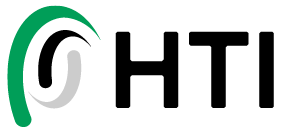Project Management: 2 Tools Essential for Success
How to Eat an Elephant: Project Management Edition
Every business has an “elevator pitch.” Also known as a 5 second explanation of what their business is. When someone asks what HTI is or what we do, we say, “We recruit talent and manage projects for manufacturers.” The project management piece is what sets us apart from other firms. HTI looks at all our operations through the window of project management. Each facility, job opening, and person seeking placement is unique. Consequently, the onboarding process is different from location to location.
Years ago, I was fortunate enough to work in Project Management in the Nuclear Construction industry. That experience taught me some valuable techniques and tools that continue to serve me well. Today, our entire leadership team uses these two vital tools to complete tasks and get things back on the right path, if there are any problems.
Project Management Timelines
At HTI, we’ve developed a culture of starting with the end goal in mind. We start at the end goal and work backwards to map out a timeline to achieving that goal. This is a fundamental process for success.
Corrective Action Protocols
Putting all the details, potential roadblocks, and accountable owners of each action item on a written plan is key for success. Make the documented plan accessible to all project team members and encourage them to place it in a highly visible area.
The timeline and corrective protocols should be established in the initial design meeting. Other than developing these plans, the meeting allows everyone involved to talk about resources needed to make the project happen. Collaborative development of a project plan also allows the team to discuss and set reasonable expectations. For example, if you must hire 500 associates over the next 12 months that sounds daunting, but if you break the hiring up to 40-60 per month it seems manageable.
These tools and techniques can be applied to any project regardless of scale; staffing and recruiting, startups of new facilities, expansion of existing facilities, job fairs, outplacement, etc. I encourage consistent use of this model so when the time comes to execute on a crucial project, this process will run like a well-oiled machine.
